
| Continued from Previous Page. From Wyoming Tales and Trails This Page: Cokeville. The Whitney Boys. |
 |

| Continued from Previous Page. From Wyoming Tales and Trails This Page: Cokeville. The Whitney Boys. |
 |
|
|
|
About This Site |
|
The coming of the railroad and open range made possible large sheep ranches. Ranches were operated by John D. Noblitt and Frederick Roberts. Noblitt ran a winter flock containing over 10,000 sheep, but was dependent upon use of public lands. Each animal might require over 10 acres of land. Cokeville, wool awaiting shipment, approx. 1911. In 1915, Joe Kinney shipped out 24,000 sheep.
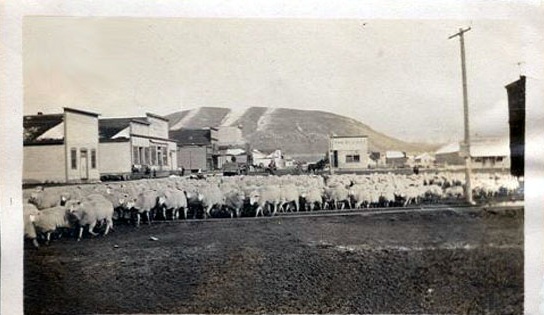 Cokeville, approx. 1910. With the growth of Cokeville, Diamondville and Kemmerer, a debate raged was to whether Uinta County should be divided. The Cokeville Register had been formed for the purpose of opposing the division of Uinta County. C. Walt Brandon, owner of the Kemmerer Camera, bought the paper and changed its editorial policy to supporting a new County. In 1911, Lincoln County was formed with Kemmerer being named as the county seat. In September of that year, two sheepherders, Hugh and Charley Whitney, came into town. The brothers had for that year had been cutting a wde swath through Idaho and Wyoming. Earlier that year, the Whitneys robbed a saloon of $200.00 and were arrested, but made good their escape shooting the deputy. Several days later Hugh shot William Reuben "Rube" Scott, his cousin, in the hand. Additionally, Hugh shot and killed a conductor on the Oregon Short Line Railroad. Thus, Hugh had an award of $1,500.00 posted for his capture. The boys fled to Cokeville and proceeed to the bank in which Asa D. Noblitt, the cashier, was on duty. Making no effort to conceal their identity, the boys had come to make a withdrawal at the point of a gun. Unfortunately, Noblitt informed the brothers, the vault was on a time lock and could not be opened for another one and a half hours. The boys calmly waiting. As customers entered, they were held at the point of a gun, not without, however, sharing a box of Mr. Noblitt's cigars. A woman customer entered and the two brothers decided that they could not hold her. Thus, scooping up an available $600.00, the boys departed. Not withstanding an extensive search and posse, the boys were not heard from again for another 41 years. In 1913, newspapers reported that Hugh had been arrested in a bar in Salt Lake City. The person arrested was not Hugh. Hugh was five foot eight inches tall and had blue eyes. The person arrested had brown eyes and was five foot six inches tall. Persons who knew Hugh denied that the person arrested was Hugh. Nevertheless, the Salt Lake City Police held the arrestee named Joseph Gabriel in their lockup for two days beore he was finally released.
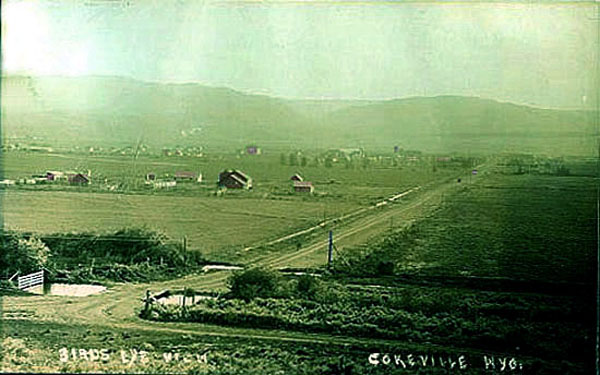 Cokeville, undated.
The other two Cokeville boys involved in the railroad heist were Rocky Stoner's son Clarence and Albert Meador who claimed Kemmerer as his residence. The robbery had been planned for four months in Cokeville.
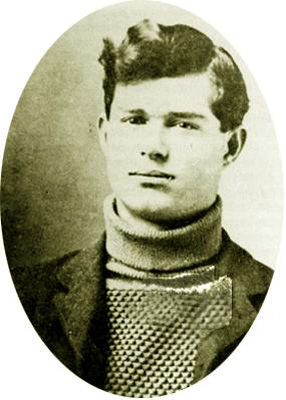 . . 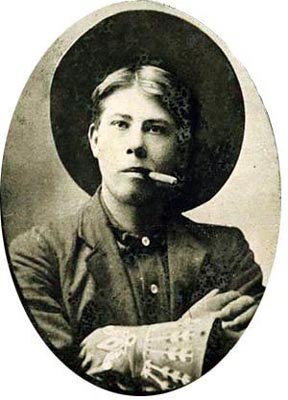 Left: Charles Manning; Right: Albert Meador
Meador allegedly moved to Missouri where he left a trail of various crimes behind. Under assumed names the Whitney Brothers enlisted in the Army during World War I and served in France. In 1935 Hugh moved to Canada. Hugh died on Octoer 25, 1951. As a result of which Charley decided to come clean and put his affairs in order. At the suggestion of the Governor of Montana went to Wyoming, pleaded guilty to the Bank robbery 41 years before. He was released to return to Montana. In his confession he blamed Manning for leading the two into a life of crime. Charley died on November 13, 1968. For details as to the robbery of the No. 5 train, see The Eugene Daily Guard, July 2, 1914; and The Daily East Oegonian, July 6, 1914. See also The Bend Bulletin, June 21, 1952, p. 3, and "Wyoming's Outlaw Brothers," 60 Annals of Wyoming, Fall issue, 1988 p. 12.
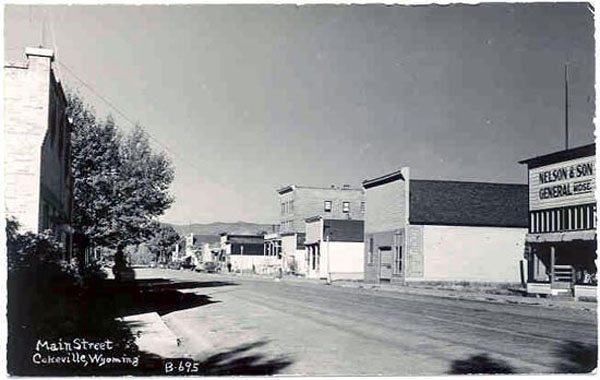 Cokeville, approx. 1939 The three story building in the distance on the right is the hotel. The one-story false fronted building to the right of the hotel is the former bank. In September 1932 the deposits and accounts of the bank were transferred to a bank in Kemmerer. The building was later occuppied by a saddlery. The hotel was torn down in 1985 after a portion of the roof collapsed as a result of heavy snow.
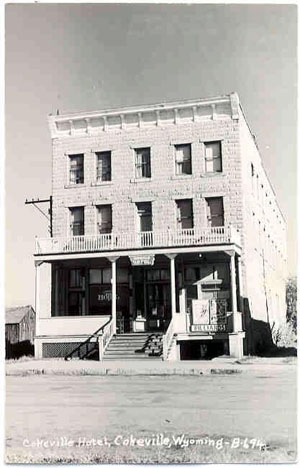 Cokeville Hotel, approx. 1939 Next page: Afton and the Star Valley. |